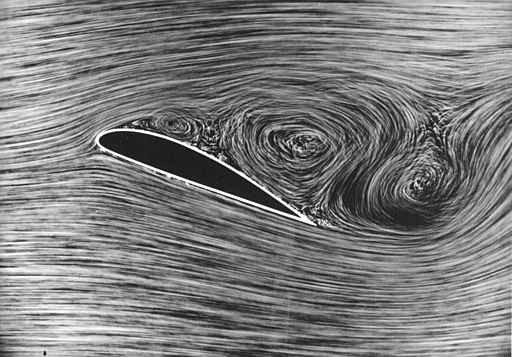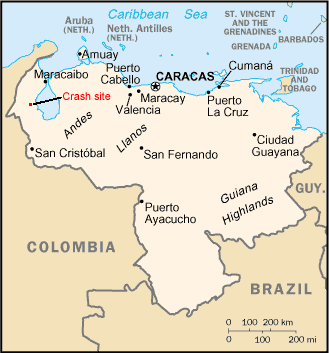Deep stall also known as “Super Stall” is an aerodynamic condition where an aircraft experiences critical angle of attack and recovery actions are ineffective. Not every aircraft in a deep stall can be recovered. This problem mostly affects aircraft with T-tail design. The critical angle of attack is typically 15° to 20° which causes the airflow to dominate and lift to be reduced. Hence, the wing of the aircraft becomes unstable.
Critical angle of attack
It is the angle where an aircraft experiences a stall. The critical angle of attack is the exact point at which airflow stops the wing to lift needed for the flight. This angle is not constant, but it is characteristic specific on different wing designs and is frequently determined during aircraft’s certification procedure.

Fig: Stall formation
During flight, the airflow across the wing’s surface is layered and smooth. In critical time, the angle of attack and the lift produced by the wing rise simultaneously. Beyond this angle, the smooth air flow becomes unstable, and the lift continuously drops. Despite the aircraft’s speed, attitude or engine power, the difference in airflow results in a stall.
Aerodynamics behind a deep stall
There is nothing threatening about T-tailed aircrafts. It has the same stability compared to airplanes with other designs. They help in easy and more effective elevator control.
Most aircrafts stall at or below 20 degrees angle of attack. Deep stall can occur when an airplane is forced into an attitude more than its angle of attack. As the angle of attack increases, the center of pressure (center of lift) moves forward. The center of pressure is typically located at one-third to one-half of the wing chord and is balanced by the down force provided by the horizontal stabilizer. The center of pressure shifts forward with increasing angle of attack. The patterns for stall movement vary for various wing designs.

Fig: Depiction of the airflow
The swept wing has very poor stall characteristics despite having several aerodynamic benefits for high-speed flying. Less air flows over the wing at the wingtips than at the wing root as a result of the spanwise flow effect, which starts the stall at the wingtips and causes a loss of aileron control. (Ailerons are flight controls that roll the airplane around its vertical axis.) Pilots are not alerted during aerodynamic stall warning when turbulent air flows strike the tail.
Center of pressure/lift in a deep stall
When the wing stalls in a critical angle of attack, the center of pressure goes to zero. This can actually blank the tail and significantly decrease elevator effectiveness by putting the T-tail in the wing’s airflow shadow, depending on the placement of the wing. Inadequate handling can contribute to a stabilized deep stall. A low-tail aircraft could possibly go through a deep stall, though that is a rare scenario. Deep stalls occur when an airplane is forced into a severe nose up attitude due to the mismanagement of the pilot or turbulent air forces, which makes the elevator inoperable. Once the airplane is encapsulated in a deep stall, it could be impossible to force the nose down.
Notable examples of a deep stall
1963 British Aircraft Corporation One Eleven
(BAC 1-11) test crash
On October 22, 1963, a British Aircraft Corporation aircraft met its demise in the 1963 BAC One-Eleven test disaster, which occurred close to Chicklade in Wiltshire, England.
The incident happened during a test flight of a BAC One-Eleven (registered G-ASHG), piloted by Mike Lithgow, that had taken off from Wisley Airfield with seven crew members on board. In order to evaluate handling and stability during the approach to and recovery from a stall with the center of gravity in different positions, the BAC One-Eleven was conducting its fifth test flight.
The airplane descended rapidly in a horizontal attitude from a height of 16,000 feet (4,900 meters) with 8° of flaps before entering a stable stall and eventually hitting the ground with very little forward motion. The aircraft at Cratt Hill, near Chicklade, a small village in southern Wiltshire, next to the A303, broke up and caught fire, killing all seven crew members.

Museum of BAC 1-11
The plane was on its fifth stalling test of the day, and the crash occurred 23 minutes after take-off from Wisley. The crew were Lt. Cdr. M. J. Lithgow OBE, Chief Test Pilot; Capt. R. Rymer (Test Pilot); B. J. Prior (Aerodynamicist); C. J. Webb (Designer); R. A. F. Wright (Senior Observer); G. R. Poulter (Observer) and D. J. Clarke (Observer).
Cause of the crash
The primary cause of the crash was the aircraft’s entry into a stable stalled situation because the wings were blocking the airflow from the tail elevators This was the first incident when the peculiarity of rear engine T-tailed aircraft, known as deep stall, was identified as the cause.
Relatively easy preventative measures were implemented as soon as deep stall was identified. These included stick-shakers, which signaled the approaching stall, and stick-pushers, which physically lowered the nose before the stall was achieved while the tailplane and pitch controls
were still functional.
2005 McDonnell Douglas MD-82 Crash
(Western Caribbean Airways Flight 708)
Flight WCW 708, an MD-82, took off from Medellín-José María Córdova Airport and landed in Panama City-Tocumen. The airplane began to ascend to FL330 from its cruise altitude of FL310. The crew requested to be taken immediately to the ONGAL waypoint as the speed steadily dropped. The controller instructed the crew to stay on course and wait for additional authorization.
The crew discussed weather-related subjects, such as freezing and when to use the airfoil anti-ice and start the engine. Although the aircraft was cleared to descend to FL310, it did so as soon as the autopilot was deactivated. The request for a further dip to FL290 was misinterpreted by the Maiquetía controller as coming from flight 708. Flight 708 requested to descend instantly to FL240.

Fig: Portrayal of the crash site
When the controller asked how the aircraft was doing, they replied that both engines had burned out. The controller gave the go-head to descend to the pilot.
Meanwhile, the stick shaker and the auditory stall warning signal had gone off, along with the altitude alert warning. At roughly FL250, the airspeed had increased to a minimum of 150 indicated air speed knots. The crew stated that they were unable to control the aircraft when they descended through FL140. The plane dropped at a speed of 7,000 feet per minute before crashing into a marsh.
About three minutes and thirty seconds had passed during the entire descent from FL330.
Cause of the crash
It is found that the accident’s cause—the inability to respond appropriately to correct the aircraft’s stall and manage the situation until it fell into the ground—was caused by an incorrect hierarchy of priorities in the execution of the procedures.
How can passengers recover from a deep stall?
During a stall, passengers should remain calm and obey what the captains of the aircraft say. During turbulence or sudden movements, they can fasten their seatbelts for their own protection. Pilots are skilled to manage stalls therefore will do what they have to. They should trust the pilot’s decisions in recovering from the deep stall. More stress can cause mistakes thus people should keep quiet and encourage the aircraft team in whatever tactics they come up with.
What can pilots do during a deep stall?
Reduced control efficacy and the appearance of a stall warning signal are indicators that a stall is about to occur. Reducing your angle of attack is the first and most crucial step in starting the recovery process once you realize you have reached a stall. For the majority of training aircraft, recovering entirely from a stall takes measures such as:
- pitching nose down
- leveling the wings,
- increasing power as necessary
- going back to the intended flying root.
Other types of aircraft can also have deep stalls. These days, a deep stall is more common in fighter aircraft. Recovering is about moving up and pushing the nose down.
Using a stick pusher
Another way could be to use a stick pusher/stick shakers to prevent a deep stall. In T-tail aircraft, stick pusher devices are often employed as a safety precaution to help prevent the angle of attack from rising to a point where a severe stall might occur. The Stick Pusher, a mechanical or electronic device, automatically advances the control stick as the aircraft approaches a critical angle of attack.
When it engages, the stick pusher reduces the aircraft’s angle of attack and the likelihood of a deep stall. In order to help the aircraft recover lift and avoid stalling, the stick pusher helps to restore airflow across its wings. It fulfills this by lowering the aircraft’s nose.
Conclusion
Super stalls/ deep stalls can be dangerous as seen in aircrafts and not be able to recover from it. Deep stalls can also occur in high altitude due to less air density and increasing mobility. There is no straightforward way to recovery when the elevators are inefficient. However, most pilots believe that preventing a stall is better and more of life saving than trying to cure it. Flying with appropriate airspeeds and remaining in the normal flight envelope helps in avoiding a deep stall. But it is necessary for both the passengers and pilots to remain calm and use recovery tactics and reach their destination safely. Breaking stall recovery into parts can help to be less stressful and bearable.
